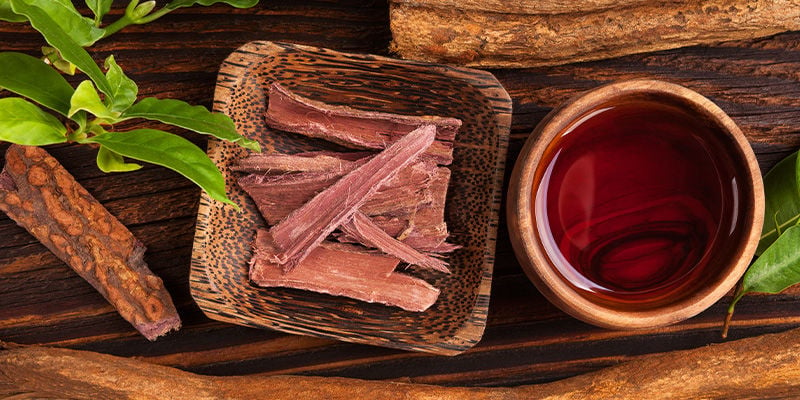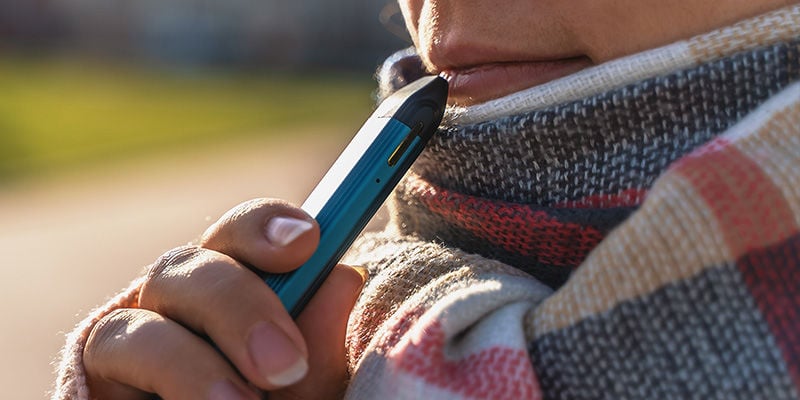
Microdosing DMT: An Overview
DMT microdosing is fairly uncommon, though more and more people are trying it. There is little science one way or another to support it as a practice. Here, we look into what we know.
Microdosing is all the rage these days, even if nobody is sure exactly what it does or whether it even works. People choose to microdose many different drugs, with psilocybin and LSD being perhaps the most popular choices.
But what about microdosing DMT? This choice is less popular, and also less understood. In this article, we investigate what we know about microdosing DMT.
What is DMT?

Dimethyltryptamine (DMT) is a naturally occurring psychedelic drug. Unique among the world of psychedelics, it can be found in certain animals, ranging from toads through to (potentially) humans. In certain indigenous Central and South American cultures, the use of DMT in the form of ayahuasca has been present for generations. Ayahuasca is a concoction that contains a DMT-rich plant alongside a plant that contains a monoamine oxidase inhibitor (MAOI), which allows the DMT to take effect when ingested orally.
How do you take DMT?
However, there are more ways to take DMT than in the form of ayahuasca. It is possible to snort it, take it rectally, inject it, smoke it, or vaporize it. Smoking and vaporizing are probably the easiest and most effective ways to take DMT. Other methods of consumption are less safe, especially injection. Intravenous injection should be avoided.
Orally ingested DMT does not work without an MAOI. If, however, you do choose to take DMT with an MAOI, then you can expect the experience to last for many hours. If you opt for one of the above-mentioned methods of consumption—without an MAOI—then DMT lasts for around 10 minutes.
To smoke DMT, it can either be sandwiched between herb or hash, or vaporized in what is typically known as a “crack” pipe. Direct contact with flames will damage DMT molecules. However, you will still feel the effects, to some degree.
These days, inhaling DMT from a vaporizer is growing in popularity. If you can access this method, it is very effective. And when it comes to microdosing, it might be the best option.
Why microdose DMT?

There has been little research into microdosing DMT, and so it’s unclear what effects it might have. It’s certainly far too early to say that microdosing DMT can help or hinder a person, but anecdotal evidence shows some promise.
Moreover, there is limited research, mostly conducted on rats, that indicates microdosing DMT could have potential benefits regarding focus and motivation (Cameron, 2019). It should be noted, though, that this study gave rats 1mg of DMT per kg, whereas the suggested human microdose is 10 times less than this by proportion. In fact, if a human took 1mg/kg, they would be taking two or three (or more) times the threshold dose for a true breakthrough trip.
An older study found that humans injected with 0.05mg/kg of DMT experienced feelings of improved mood and physical warmth (Strassman, 1994). Once again, though, this study gave people much higher doses compared to what would be considered a “microdose”.
What are the effects of microdosing DMT?

The effects of microdosing DMT remain elusive. Anecdotal reports claims that microdosing DMT can:
- Positively affect mood
- Enhance focus
- Enhance creativity
- Improve feelings of anxiety
But these are not proven. As DMT is so potent, it can also be hard to achieve a true microdose. Usually, a microdose is considered to be “sub-perceptual”. However, with DMT, it can be hard to take it without feeling some effects. Therefore, a DMT microdose might be better called a “low dose”. As a consequence, discussing DMT microdosing is difficult.
There is also evidence to suggest that low, sub-threshold doses of DMT can actually be more anxiety-inducing than higher doses. At these doses, users feel some effects, including physiological effects, but without a true psychedelic experience. Sometimes, these half-highs can be disconcerting and uncomfortable.
What are the risks of microdosing DMT

Pure DMT freebase is considered a relatively safe drug. In fact, the human body is so competent at metabolising it that it appears to not be toxic. This means that the risk of overdose is very low, and potentially non-existent.
DMT might be a risky drug for those with a history, or family history, of mental illness, though. Powerful psychedelics can sometimes trigger conditions such as psychosis. Therefore, if you are aware that you are predisposed to such conditions, then you should proceed with caution when it comes to DMT—or any other drug, for that matter.
Finally, you should be careful when it comes to MAOIs. If you take MAOI medications, then DMT will be much stronger for you, and it could last many hours. This can make it incredibly inhibiting, which can be very dangerous, especially if it’s unexpected.
And if you choose to take MAOIs to enhance the effects of DMT, then research them carefully. They have many dangerous drug and food interactions, which can sometimes be fatal, so don’t take any risks.
How to microdose DMT

There is no exact way to microdose DMT. Indeed, there is no agreement on what even constitutes a microdose. However, the maximum amount is considered 0.01mg/kg. So if you weigh 70kg, that would be 0,7mg of DMT. As previously mentioned, you will still feel the effects at a dose like this. You won’t necessarily “trip”, but you will certainly feel high.
Take this as your upper limit, and feel free to experiment. You could take significantly less than this. Half, one-quarter, or even less than that amount would still have some effect on your brain, and may be more truly described as a microdose.
Regarding the method of consumption, smoking or vaping is probably the best choice for most users. Once again, there is no science that dictates how often a person should microdose with DMT. With other psychedelics, such as psilocybin or LSD, a common practice is to dose once every three days. Many choose this option when it comes to DMT too.
However, unlike psilocybin and LSD, the brain does not develop a tolerance to DMT. Preventing the buildup of a tolerance is a major reason that people opt to dose every three days. So, when microdosing DMT, it can be taken far more regularly. Technically, it could even be consumed several times a day without causing a tolerance (we wouldn’t recommend this, though).
Besides dose and regularity, monitor yourself carefully when microdosing anything. How do you feel? Are you inhibited? Does it disrupt your sleep? Do you notice any improvements in mood? Keep a journal and record any changes you notice. This will help you to assess what effects you might be experiencing.
Microdosing DMT: Exploring the unknown
Microdosing is a poorly understood practice, and this is particularly true of microdosing DMT. Really, it’s very difficult to say what effects it has—be they positive, negative, or null. Therefore, if you choose to do it, you should proceed very carefully, explore the internet for helpful information, either scientific or anecdotal, and monitor yourself throughout the practice.
DMT is a very powerful drug, and while exceptionally beautiful, does still have the potential to do harm. So, if you feel it might be harming you, immediately cease your use and reevaluate.
- Lindsay P. Cameron. (March 4, 2019). Chronic, Intermittent Microdoses of the Psychedelic N,N-Dimethyltryptamine (DMT) Produce Positive Effects on Mood and Anxiety in Rodents - https://pubs.acs.org
- Strassman RJ, Qualls CR, Uhlenhuth EH, & Kellner R. (1994 Feb). Dose-response study of N,N-dimethyltryptamine in humans. II. Subjective effects and preliminary results of a new rating scale - https://pubmed.ncbi.nlm.nih.gov
-
 3 min
9 February 2020
What Is Tripping On DMT Really Like?
DMT is a psychoactive compound known to produce intense auditory and visual hallucinations. When consuming DMT, many people feel as though they have left their body, the world, or have entered...
3 min
9 February 2020
What Is Tripping On DMT Really Like?
DMT is a psychoactive compound known to produce intense auditory and visual hallucinations. When consuming DMT, many people feel as though they have left their body, the world, or have entered...
-
 4 min
18 October 2017
Can DMT Cause An Outer Body Experience?
Out of body experiences, abbreviated to OOBE, is a phenomenon achievable by anyone with some practice. Many prefer to call it “astral projection.” To some people, it happens naturally. For most,...
4 min
18 October 2017
Can DMT Cause An Outer Body Experience?
Out of body experiences, abbreviated to OOBE, is a phenomenon achievable by anyone with some practice. Many prefer to call it “astral projection.” To some people, it happens naturally. For most,...













 United States
United States










